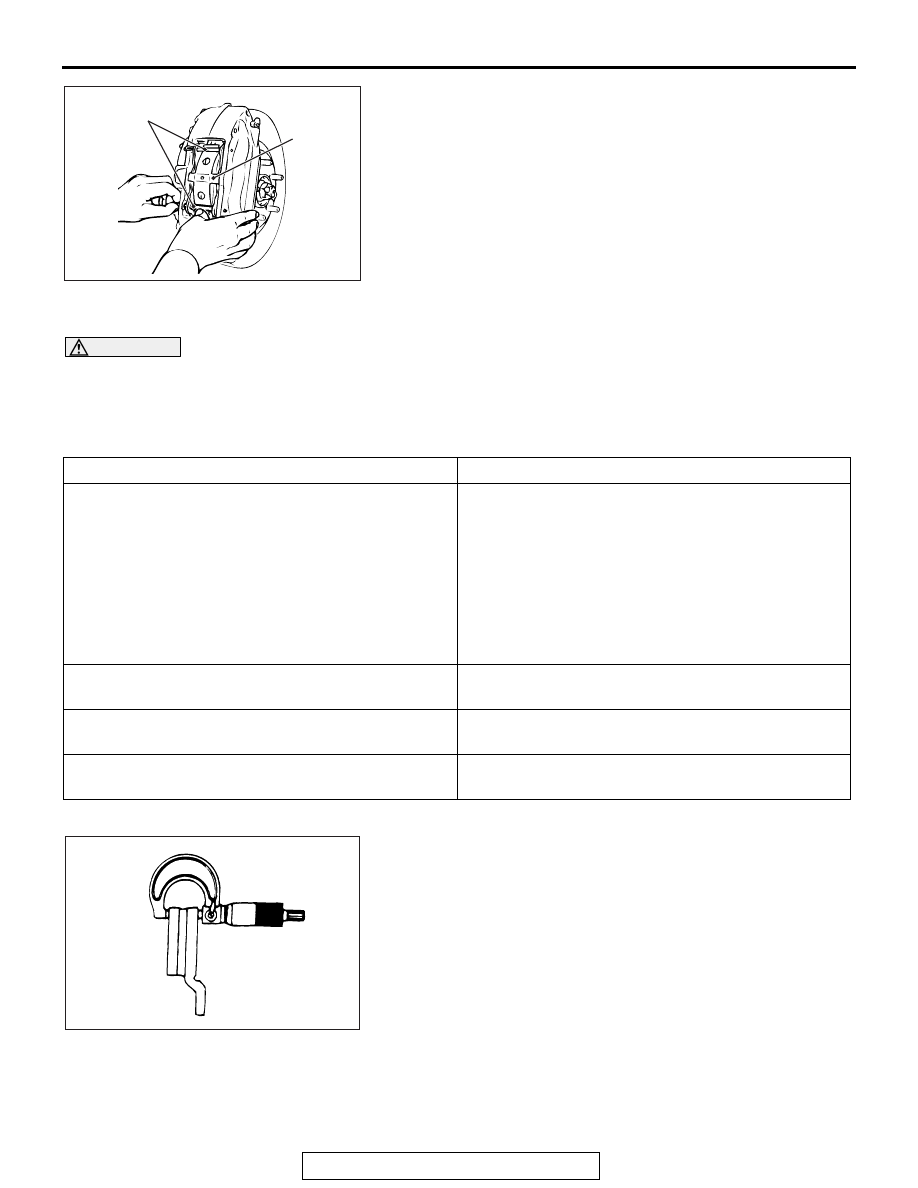Mitsubishi Lancer Evolution X. Manual - part 129

ON-VEHICLE SERVICE
TSB Revision
BASIC BRAKE SYSTEM
35A-21
8. While pressing the cross spring by hand, install the pin to
the brake caliper assembly.
DISK BRAKE ROTOR CHECK
M1351002900710
CAUTION
Disk brakes must be kept within the allowable
service values in order to maintain normal brake
operation.
Before turning the brake disk, the following condi-
tions should be checked.
.
BRAKE DISK THICKNESS CHECK
1. Using a micrometer, measure disk thickness at eight
positions, approximately 45 degrees apart and 10 mm (0.4
inch) in from the outer edge of the disk.
Standard value:
32.0 mm (1.26 inch) <Front>
22.0 mm (0.87 inch) <Rear>
Limit:
30.0 mm (1.18 inch) <Front>
20.0 mm (0.79 inch) <Rear>
NOTE: Thickness variation (at least 8 positions) should not
be more than 0.015 mm (0.0006 inch).
AC211990AC
Cross
spring
Pin
Inspection item
Remark
Scratches, rust, saturated lining materials and wear
• If the vehicle is not driven for a long period of
time, sections of the disks that are not in contact
with the pads will become rusty, causing noise
and shuddering.
• If grooves and scratches resulting from excessive
disk wear are not removed prior to installing a new
pad assembly, there will be inadequate contact
between the disk and the lining (pad) until the
pads conform to the disk.
Run-out
Excessive run-out of the disks will increase the pedal
depression resistance due to piston kick-back.
Change in thickness (parallelism)
If the thickness of the disk changes, this will cause
pedal pulsation, shuddering and surging.
Inset or warping (flatness)
Overheating and improper handling while servicing
will cause warping or distortion.
ACX00668AB